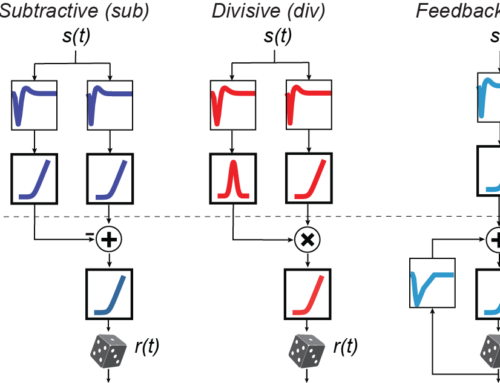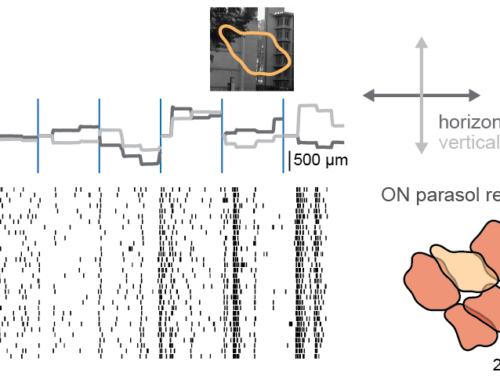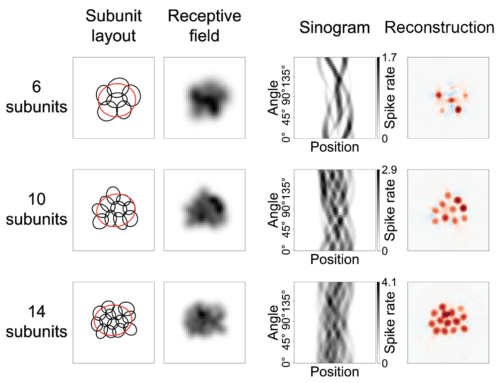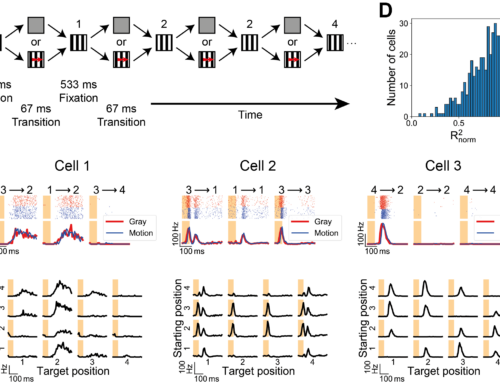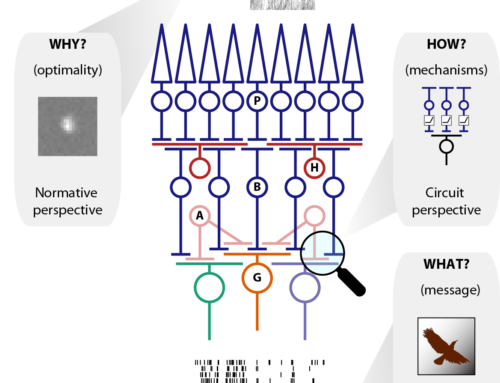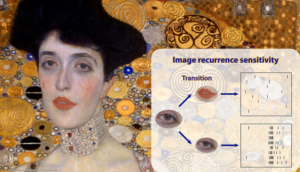
Sensitivity to image recurrence across eye-movement-like image transitions through local serial inhibition in the retina.
Standard models of stimulus encoding in the retina postulate that image presentations activate neurons according to the increase of preferred contrast inside the receptive field. During natural vision, however, images do not arrive in isolation, but follow each other rapidly, separated by sudden gaze shifts. We here report that, contrary to standard models, specific ganglion cells in mouse retina are suppressed after a rapid image transition by changes in visual patterns across the transition, but respond with a distinct spike burst when the same pattern reappears. This sensitivity to image recurrence depends on opposing effects of glycinergic and GABAergic inhibition and can be explained by a circuit of local serial inhibition. Rapid image transitions thus trigger a mode of operation that differs from the processing of simpler stimuli and allows the retina to tag particular image parts or to detect transition types that lead to recurring stimulus patterns.
